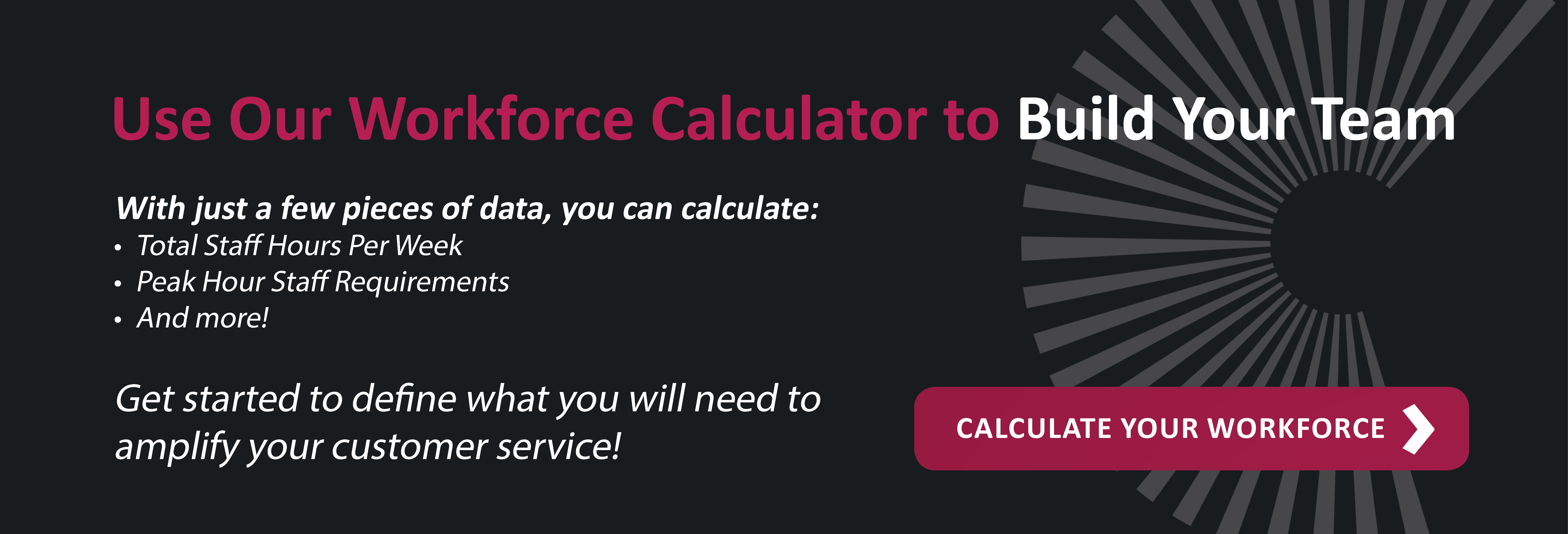4 Tips to Improve Call Center Scheduling
Call center scheduling is a difficult and time-consuming job. Top that with trying to satisfy the needs of all your staff while also meeting service levels, and you are one busy manager. And if you are using Microsoft Excel (or Google Sheets) for your call center scheduling program… Let’s see if we can find a better way.
Consider Investing in Specialized Technology
First, and most importantly, if you are using a program such as Excel to plot call center schedules manually, there is a better, simpler, and in the long run, much less expensive way. Automated scheduling software can help speed the process and make it more accurate. In addition, it can match personnel needs to specific days or day parts. Choosing a software platform that incorporates historical data can further refine forecasting and future scheduling. Even in the short run, better utilization of the team will more than offset the cost of this software.
Early Planning Smooths Peak Periods
Getting through the busy season efficiently starts with having enough agents on hand when needed. Scheduling busy times as early as possible helps agents put work first without disrupting their personal holiday plans. Planning well in advance also ensures the call center will be well-staffed to meet customer demand without sacrificing service quality.
To keep things on track when the call center is busy, consider:
- Offering time off before the busy season hits. This will help agents rest up for the big push, when time off will be scarce. Options could include voluntary time off (VTO), approved time off (ATO), or, if necessary, forced time off (FTO).
- Offering overtime. Agents may welcome the opportunity to earn extra income for holiday shopping, etc. If agents are willing to work longer hours, that could reduce the need to hire and train temporary agents.
- Offering holiday pay to encourage agents to work peak days or time slots.
- Offering non-monetary incentives to fill the schedule, which could be anything from gift cards to future time off.
To adjust call center scheduling when things get slow, consider:
- Allowing agents to leave early.
- Reducing shift hours.
- Letting people go. Veteran call center managers usually see this as a last resort, as eliminating employees guarantees the pool of agents will not be big enough when volume picks up.
Consider Your Wage and/or Payment Policies
Every call center has a system for determining wage amounts and when agents are paid. In addition to offering more hours or increased pay to fill the busy season schedule, there are other ways to adjust pay and payment policies to support scheduling needs. For example:
- Days available for time off could be weighted according to likely volume. If Fridays are slowest, then taking Fridays off can be easily approved. If Mondays are busiest, they can be removed as a day-off option.
- If agents tend to give themselves Monday off after a payday Friday, the policy can be changed to withhold holiday pay for anyone who does not show up for work on Monday (or for their next scheduled shift).
Become a Student of Call Center Data
Business owners usually receive loads of data from their call center provider. However, a hefty “data dump” does not constitute a “wealth of information” unless the data can be easily interpreted. Working with Workforce Scheduling vendor to make sure data is easy to view and interpret can help tremendously with call center scheduling. If a business owner doesn't understand the data they are given, they cannot accurately forecast their business, which then affects scheduling for their call center partner. As an alternative, a vendor rep should be available to help review and analyze the information.
Investing in scheduling technology, finding ways to incentivize agents to work busy periods, and studying performance results can all help companies understand staffing needs to make better scheduling decisions in the future.



